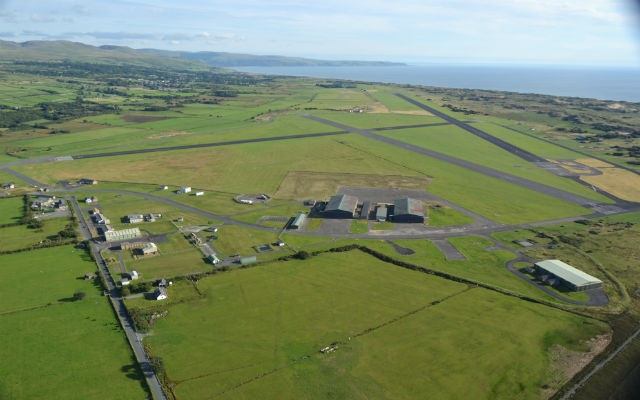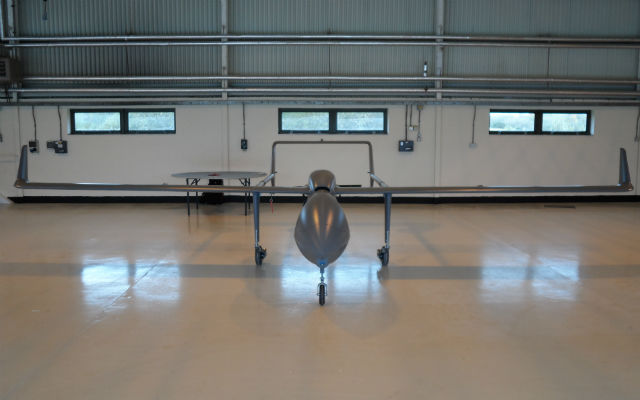Wales’ experience in testing unmanned air vehicles has been taken to the next level, with Llanbedr Airfield being awarded initial operational capabilitystatus for UAV test flights.
Llanbedr Airfield Estates (LAE) is running the site under a 125-year lease from the Welsh government and subsequently signed a deal with Qinetiq to manage the scheduled remotely piloted air systems (RPAS) operations. This is based on the latter’s experience in managing the ParcAberporth UAV testing site situated further down the coast in Cardigan Bay, which is the home to flight testing of the British Army’s new Thales UK/Elbit Systems Watchkeeper unmanned air system.
Qinetiq and LAE say that the runway at Llanbedr – at about 2,290m (7,500ft) – is longer than the one at Aberporth and can facilitate testing of the whole spectrum of UAV sizes.

Qinetiq
Llanbedr Airfield – a former UK Royal Air Force target-practice site – is situated to the east of the oversea D201 danger area established by the UK Civil Aviation Authority, which also connects to the overland D202 range to the south. Access to this from Llanbedr will be established through a flight corridor that the team says it is ready to propose to the CAA when the first UAV operator requests it.
A proposed temporary danger-zone certification would allow UAV flight at Llanbedr in an area up to 5nm (9.3km) in diameter and to an altitude of 6,000ft over the airfield. A 10nm-wide corridor adjoining D201 at two varying levels – from the surface to 6,000ft, and between 3,000ft and 6,000ft – will allow other air traffic movements above and below, according to Qinetiq.
Daytime flights will be permitted on a campaign basis, which upon authorisation would include up to 90 days of operations – not necessarily consecutively or for the same system – with a 90-day notice period to allow access out to the test ranges.
Qinetiq expects that when the airfield’s UAV activities are ramped up to full operational capability, the team will apply to the CAA for an “airspace change proposal”. This would take two years to be put in place but would effectively allow access to the ranges to be more permanent.
“There is a master plan for the airfield site,” Jeremy Howitt, programme director for UAS future business and strategy at Qinetiq, says. “There is an acceleration in RPAS programmes, especially for larger systems, and for the test and evaluation of these systems. We could accommodate pretty much every UAV on the market.”
Howitt says the team is taking a step-by-step approach to the integration of UAVs into the test site, which will also allow for some manned flights. There are a number of programmes lined up for 2015, he adds. Qinetiq is currently in discussions with the UK Ministry of Defence regarding potential testing at Llanbedr, and is planning on carrying out some UK and European airspace integration testing, he notes: “If customers want to fly in Europe – and they do – and they want the infrastructure in place, then Llanbedr is on the map.”
Qinetiq is involved in the UK’s Autonomous Systems Technology Related Airborne Evaluation & Assessment (ASTRAEA) programme, which aims to establish the technology and regulations for UAVs to be regularly flown in national airspace.
ASTRAEA phase 3B brings testing of different technologies within UK airspace, Howitt says: “For 3B, the bid is in…and we’re confident that we’ll get the green light and will start it from next summer out to 2018.”
Qinetiq is to lease the UMS Group F-720 tactical UAV to carry out ASTRAEA testing. It is expected to be delivered to Llanbedr within 12 months..

Beth Stevenson/Flightglobal
The F-720 can also carry the Selex ES Seaspray 5000E radar, which will enable Qinetiq to carry out some maritime surveillance testing.
The ultimate aim for this 3B phase is for the company to demonstrate the F-720 flying through the flight corridor, out into D201, over the Irish Sea and on to land at an airport with routine air traffic.
Through the European Space Agency’s Desire project, Qinetiq will also demonstrate the F-720 with an Airbus Defence & Space Ku-band satellite communications payload. It could also look to bid for Single European Sky air traffic management projects that may emerge, Howitt says.
The vision does not stop at UAVs though, with Llanbedr also being among eight finalists that could host a future UK spaceport. A choice is expected by 2018, with the Llanbedr team now assessing ways to extend the runway to 3,060m, as required for the effort.
Source: Flight International



















